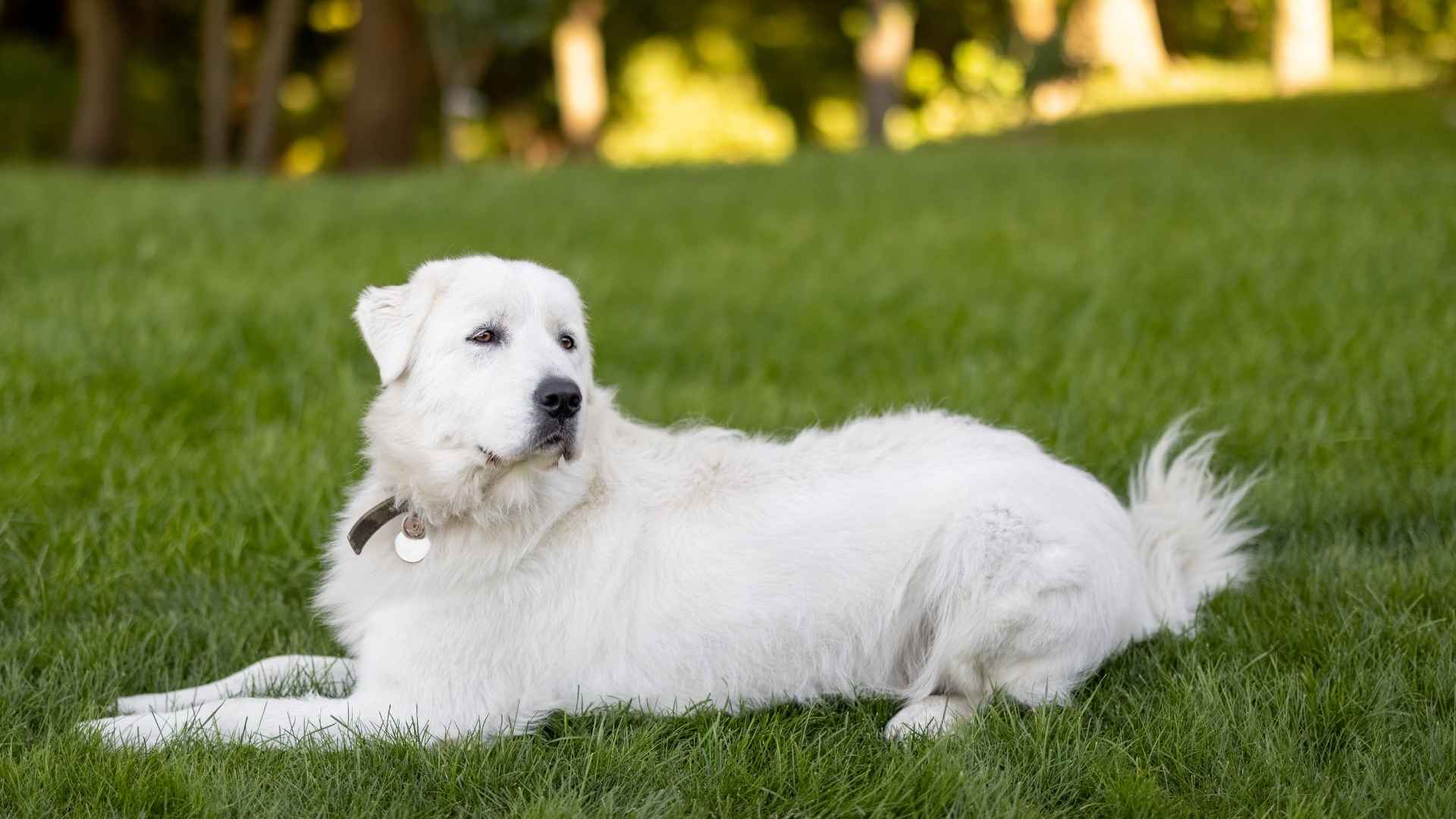Your niece is playing with your dog and suddenly shouts, “Why does he have a claw there?” You look closer. She’s pointing at your dog’s leg, not the paw. And she’s right — there’s a claw just sitting there, way up, like it doesn’t belong.
You’ve had your dog for years and never noticed. You laugh it off, but deep down, you’re wondering too. Why is it there? What’s it for? That single moment of curiosity leads to a rabbit hole of surprising facts.
Some dogs have this claw. Some don’t. And for the ones that do, it’s not random. It’s part of something much bigger. That one moment of discovery turns into a deeper look at something most people miss.
And you’re about to learn which dog breeds have it — and why that little claw is a bigger deal than it looks.
Dog Breeds With Dewclaws
1. Great Pyrenees
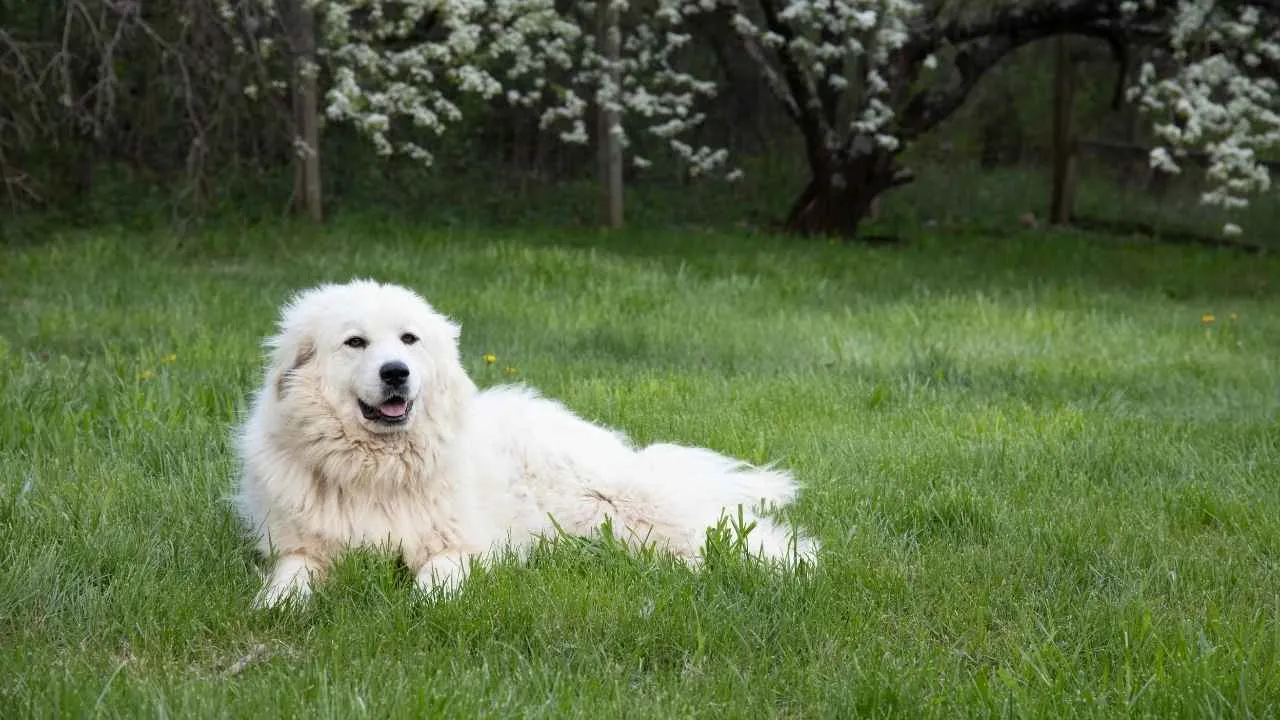
The Great Pyrenees was originally bred to guard livestock in the rugged Pyrenees Mountains. Its massive build, thick double coat, and sharp instincts made it ideal for harsh weather and predators. These dogs are calm, observant, and bred for purpose over flash.
Double dewclaws on rear legs
One of the breed’s most unique physical features is its double dewclaws, found on the rear legs. These extra claws are more than cosmetic — they help the dog maintain balance on rocky terrain. The rear dewclaws are strong, well-formed, and set apart from many other breeds.
Calm, confident temperament
Though imposing in size, the Great Pyrenees is known as a true gentle giant. It rarely reacts with aggression but stays alert and protective when necessary. Its confidence and steadiness make it an excellent guardian without being overly reactive.
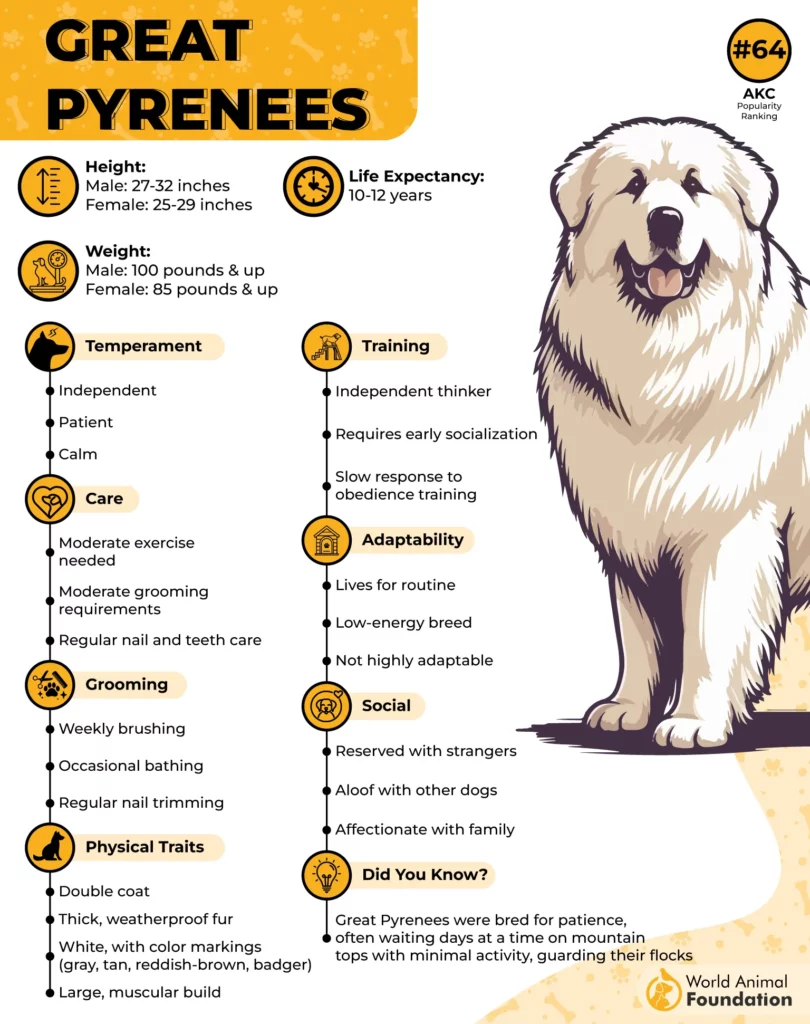
Needs a room and a job
This isn’t a breed made for small spaces or inactivity — it thrives with space to roam and tasks to fulfill. Regular walks and mental stimulation help prevent restlessness. Its nature shines best in environments where its independence and instincts are respected.
2. Briard
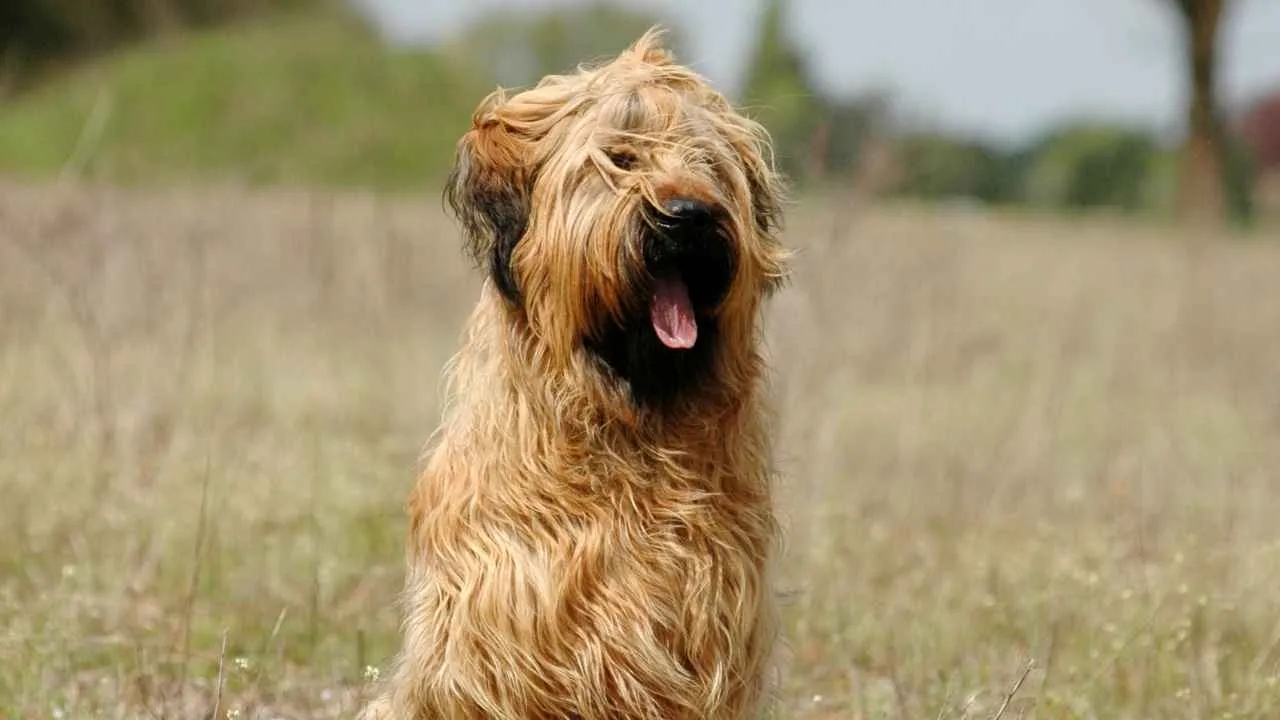
The Briard has centuries of working roots in French farms, where it was prized for both herding and guarding. This dog wasn’t just athletic — it was valued for decision-making and independence. Farmers relied on it to manage flocks without constant commands.
Rear dew claws with a purpose
Briards are one of the few breeds known for having rear dew claws on both hind legs, sometimes even hind dewclaws in pairs. These claws aren’t just genetic quirks — they add grip and balance when navigating uneven pastures. The trait is so tied to the breed that it’s part of official standards.

Deeply loyal and perceptive
Briards are intensely connected to their people — they’ve even earned the nickname “heart wrapped in fur” in France, as highlighted by My Family Vets. They’re known to remember human voices and tones with startling accuracy. That memory and alertness make them strong companions in emotionally attuned homes.
Needs challenge and responsibility
Without mental engagement, the Briard can become restless or overly assertive. It was built for work, and it thrives when given responsibilities like advanced obedience, scent work, or agility. This breed responds best to calm, consistent guidance rather than harsh corrections.
3. Beauceron
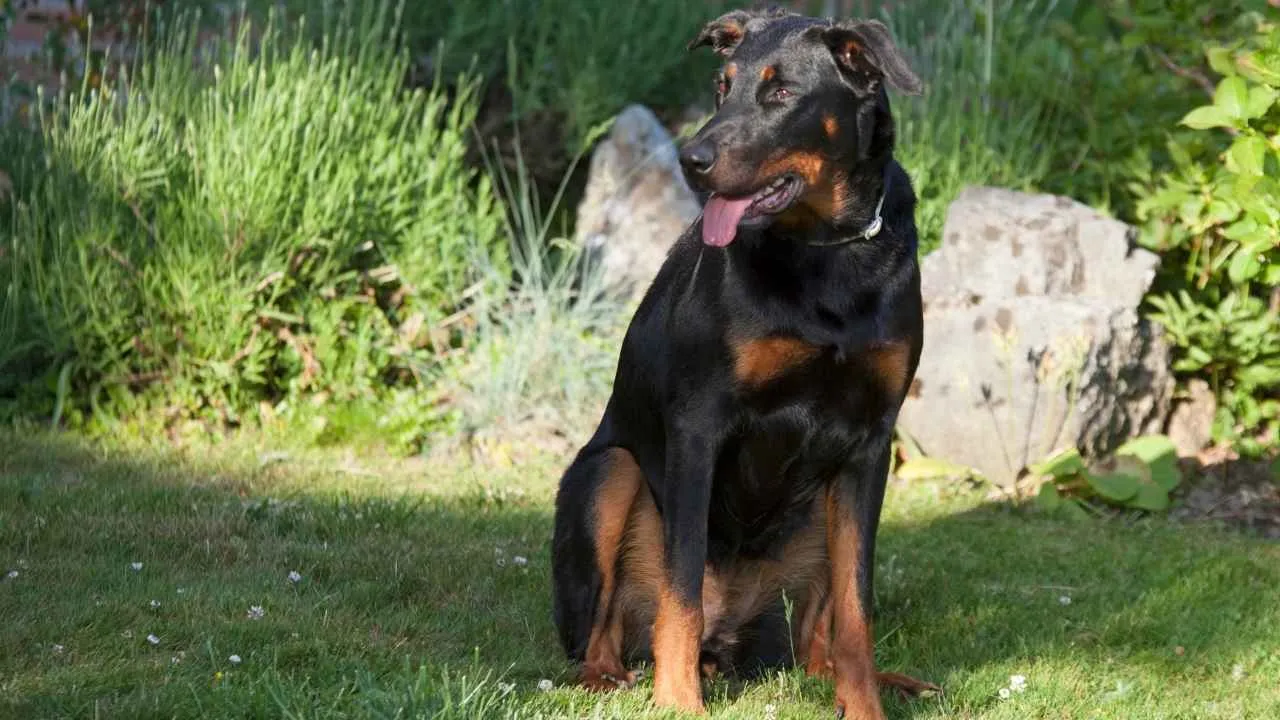
The Beauceron is a herding and protection dog that originated in rural France. It’s muscular, alert, and bred to move with precision across open fields. This breed isn’t just strong—it’s calculated in every step and intensely focused on its task.
Functional double dewclaws
As part of the breed standard, the Beauceron has double dewclaws on each hind leg. These aren’t vestigial—they serve a role in grip, especially when maneuvering uneven or soft ground. The dog’s dewclaws are positioned to support agility and directional control.
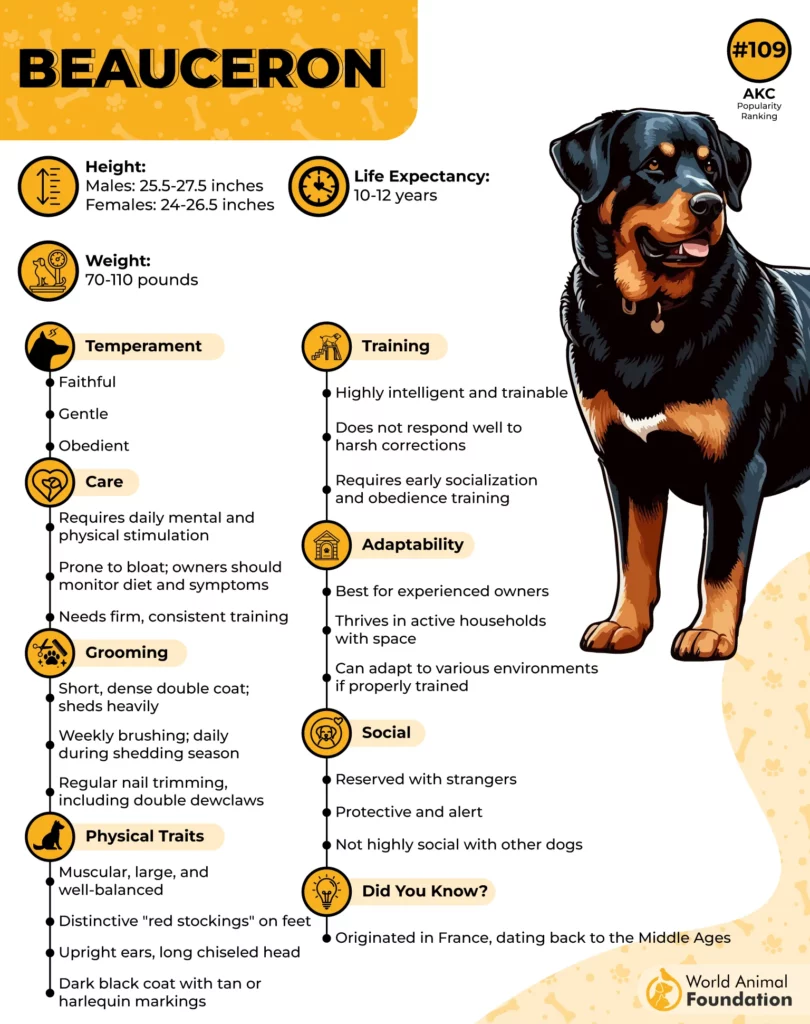
More than just obedient
What makes the Beauceron stand out isn’t just its loyalty, but its judgment. In herding and security work, it’s trained to make quick decisions on its own. Unlike breeds that wait for a cue, this one acts when the situation demands it.
True working French dog breed
The Beauceron’s long history in France is closely tied to military, police, and farm work, as the American Beauceron Club stated. It thrives when given structure, responsibility, and challenging tasks. This isn’t a breed that blends into the background—it performs best when it has purpose.
4. Norwegian Lundehund
The Norwegian Lundehund isn’t just rare — it’s structurally one of a kind. Each foot has six toes, helping it grip rocky cliffs where it once hunted puffins. It can also bend its head backward to touch its spine and spread its front legs out to the sides.
Extra dewclaws for a reason
This breed doesn’t just have dewclaws — it’s believed to be one of the only breeds where the extra toes, including double dewclaws, are essential for function. These adaptations gave it unmatched agility while scaling vertical surfaces. That’s something most dogs simply can’t manage.
A niche presence in the dog world
In the broader dog world, the Lundehund remains a mystery to many, partly due to its near extinction after WWII. Its revival required careful breeding and remains closely managed today. That rarity adds to its intrigue among canine enthusiasts.
Sensitive and specific needs
The breed isn’t a casual choice for pet parents unfamiliar with primitive-type temperaments. Each individual dog may vary in sociability, and they tend to form strong bonds with their people. Their quirks and diet sensitivities also mean they thrive best with experienced owners.
5. Spanish Mastiff
The Spanish Mastiff has guarded livestock on the Iberian Peninsula for centuries, especially during transhumance migrations. It’s a Molosser-type breed known for its raw strength, heavy bone structure, and deeply ingrained territorial instincts. This dog wasn’t bred for beauty — it was bred for hard work.
Naturally occurring rear dewclaws
Rear dewclaws are a standard feature in the breed, often thick and set low on the leg. Unlike many modern dogs, they were never removed from working lines, as they provided extra grip during uneven mountain treks. This anatomical trait is tied to their historic role in rugged terrain.
Slow to act but never absent
Spanish Mastiffs are not quick responders — they observe, assess, then act with certainty. That slow processing speed is deliberate, not laziness, and was essential when monitoring large herds. You won’t find them barking at every leaf, but when they move, it means something.
Intimidation through silence
This breed is known for deterring threats through sheer presence and silence rather than confrontation. Many shepherds value their quiet confidence, which reduces stress for livestock. They don’t chase — they block, stand their ground, and quietly own the space around them.
6. Pyrenean Mastiff
The Pyrenean Mastiff was bred in the Aragonese Pyrenees to guard herds from wolves and bears. What makes it stand out is its combination of immense strength and measured response — it doesn’t rush, it calculates. Unlike many large breeds, it’s been shaped by centuries of true fieldwork.
Physical power with thoughtful movement
This dog isn’t just big — it’s solidly built with impressive bone density, giving it an anchored stance on uneven terrain. It moves with deliberation rather than speed, conserving energy for when it’s really needed. Its paws are wide and padded, made for mountain work.
Naturally equipped with protective instincts
The breed isn’t just “watchful” in a general sense — it has inherited the ability to differentiate between normal and threatening movement in livestock zones. Its protective drive kicks in silently and confidently, especially at night when its instincts are most active.
Dewclaws serve a practical function
What sets this breed apart in this context is that its dewclaws, present on the rear legs, are strongly developed and functional. They help with stability on rocky slopes, allowing the dog to pivot with control. These aren’t just remnants; they’re part of the working design.
7. Icelandic Sheepdog
The Icelandic Sheepdog is the only dog breed native to Iceland, developed to herd livestock in tough, uneven landscapes. Its agility and surefootedness weren’t just useful — they were essential for survival in subarctic pastures. This is a dog built to navigate steep hills and icy ground.
Naturally retains rear dewclaws
Most Icelandic Sheepdogs are born with rear dewclaws, a feature that reflects the breed’s working history. These claws often help with stability and grip while climbing rocky slopes. Unlike many breeds, the presence of dewclaws is considered a breed standard here.
Always alert and vocal
They’re known for being watchful, with a quick reaction time and a tendency to bark when something feels off. That trait made them ideal for signaling farmers about approaching predators. This sharp awareness is still very much part of their personality today.
Thrives with movement and purpose
This breed doesn’t just like to move — it needs it. Icelandic Sheepdogs excel in agility and herding trials, often outpacing expectations for a spitz-type dog, as mentioned in PetMD. They need environments that offer stimulation, routine, and space to stretch their natural instincts.
Conclusion
You’re sitting with your dog again, now looking at its legs with fresh eyes. That odd little claw that sparked so many questions? It’s not so odd anymore — it’s part of a larger story shared by a few breeds shaped by work, survival, and instinct.
In certain breeds, these dewclaws — whether on the rear feet or front dewclaws — serve real, functional purposes. They’ve helped dogs scale cliffs, herd sheep, and guard flocks in mountains. Think Pyrenean Mountain Dogs, Estrela Mountain Dogs, and others whose anatomy wasn’t random — it was built by generations of need.
Sure, dewclaw removal is sometimes done for health or safety, but it’s not always necessary. In fact, not all dogs even have dewclaws, and for those that do, some have single or double dewclaws based on their history.
So next time you trim your dog’s nails or check their dog’s paws, remember — there’s more to those claws than meets the eye. For dog owners, it’s not just anatomy. It’s legacy.


